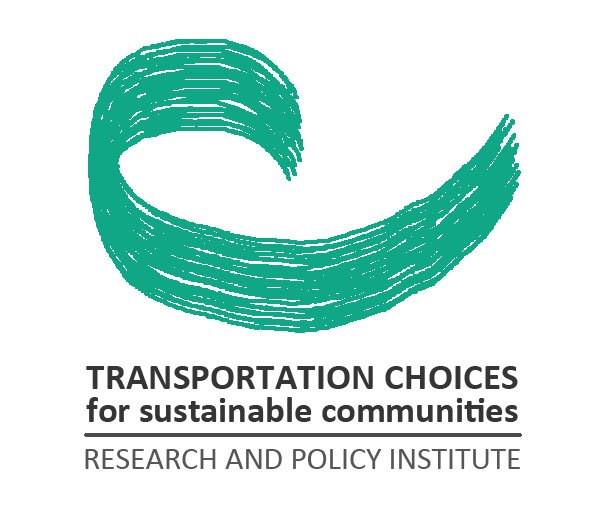Category News&Updates
June 17, 2021, Posted in Blog
Of the 8 regional transit operators in California, 6 of the 8 are in the SF Bay Area (not counting ferry operators or Capitol Corridor).
One conclusion is that the regional transit structure in the Bay Area is the unusual and is part of the problem in getting around the Bay Area.
In the Bay Area
1. San Francisco Bay Area Rapid Transit District (HR)
2. North County Transit District (CR – San Diego Coaster)
3. Peninsula Corridor Joint Powers Board (CR – Caltrain)
4. Altamont Corridor Express (CR -ACE)
5. Sonoma-Marin Area Rail Transit District (CR- SMART)
6. Golden Gate Bridge Highway and Transp. District (CB)
Not in the Bay Area
1. Southern California Regional Rail Authority (CR – Metrolink)
2...
January 28, 2021, Posted in Blog
With the possibility of a green new deal getting closer, we would like to share our article, published a year ago in World Transport Policy and Practice, Pp. 89-105 “Freedom to Drive and the Tragedy of the Commons of U.S. Cities: Reflections on Policy, Culture and Technology”.
Available at transportchoice.org
Abstract:
This article reinterprets many of Garrett Hardin’s “tragedy of the commons” arguments (1968) from the perspective that urban roadways are public “commons”. Solutions to transportation problems have historically been dominated by technological solutions, and the discourse today has
not changed, only the type of technology...
February 13, 2017, Posted in Blog
How Should We Plan for Public Transit to Sports Stadia (and Other Major Regional Attractors)?
In the wake of this year’s Super Bowl, the ITE Journal has just published our article reviewing the transportation planning for the site of last year’s Super Bowl; the San Francisco 49ers new stadium. After playing for over 60 years in one of the most transit-oriented cities in the US, in 2014 the 49ers moved to a $1 billion-dollar facility 40 miles south in the highly congested and auto-oriented Silicon Valley. See article at: HowShouldPublicTransitBe EvaluatedFeb2017
The transportation planning for the new stadium was done primarily via an Environmental Impact Report (EIR) that used automobile level of service (LOS) as its only transportation performance metric...
August 30, 2015, Posted in Blog
Transportation Choices Principal and Vice President Dr. Joseph Kott gave a lecture on August 24th in Oakland, California on urban planning practice and education in the United States to a visiting group of academics from China’s Hunan University of Finance and Economics. Dr. Kott emphasized the importance of sustainable transportation in today’s urban planning education and practice.
August 7, 2015, Posted in Blog
Transportation Choices is deighted to pass along the news of a new book by Prof. John Whitelegg, Editor of World Transport Policy and Practice, entitled Mobility: A New Urban Design and Transport Planning Philosophy for a Sustainable Future. Transportation Choices is proud to support World Transport Policy and Practice through grant funding from the Helen and William Mazer Foundation. Professor Whitelegg is a distinguished, visionary scholar and advocate of sustainable transportation.
Here is the statement about the book from the Amazon site at which it may be purchased:
“We have experienced over 200 years growth in mobility measured by the distances we travel every day or every year and this growth is fed by eye wateringly large subsidies, a persistent bias in politics and planning ...
August 22, 2014, Posted in Blog
The following is reprinted with permission from cityminded.org and was written by Research Affiliate Stephen Raney.
The original can be found at: cityminded.org
I really enjoy Meeting of the Minds’ unique combination of technology and regional planning. Two of the mobility conference sessions covered the “Urban Mobility Revolution” and carsharing (ZipCar, City CarShare, and peer-to-peer Buzzcar).
While the future is anyone’s guess, below are seven standout future mobility items, with a bias towards self-driving and youtubility.
1. GM’s EN-V: small self-driving, self-parking future car
The video (above) features high-speed autonomous crossings through congested, stoplight-free intersections...
March 2, 2014, Posted in Blog
Joseph Kott, PhD, AICP, PTP
Principal and Vice President, Transportation Choices for Sustainable Communities Research and Policy Institute
The “complete streets” movement has made sustainable transportation a tangible goal in many of America’s cities and towns. Streets are no longer seen as reserved for cars only or mostly, but as both links and places for people, venues for multimodal transportation. Yet the most visible of all the symbols of urban transport and automobile dependence, the urban freeway, remains the domain of the private motor vehicle. In 2011, there were 477 billion motor vehicle miles driven on America’s urban freeways.[1] While the approximately 93,000 lane mile of urban freeways represent less that 4% of the nation’s roadway miles, these highways carry near...


